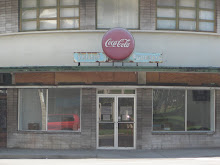
According to reports by the AP Press, CBS, NPR, PBS, the New York Times and others, there is a patch of garbage roughly the size of Texas (some reports say twice the size of Texas) floating around in the middle of the Pacific Ocean between California, Hawaii, and Asia. This Great Pacific Garbage Patch known as the Pacific Gyre stays together as a result of ocean currents.
A skeptical friend of mine questioned the existence of the patch, because in all reports, the only accompanying pictures we could find were of masses of marine debris--on land. If this Great Pacific Garbage Patch was really the size of Texas, why wasn't it detectable on google Earth? Why in the heck couldn't we find a single picture of it anywhere?
I posed this question of the veracity of the Great Pacific Garbage Patch to Chip, an oceanographer at the University of Hawaii, who specializes in marine debris and has himself manhandled some of the debris from the Pacific Gyre. He confirmed the existence of the patch and described how it is comprised of objects as large as nets to items so small they are microscopic. He said he would send me a picture, but I suspect he's having more difficulty finding a picture than he thought.
In researching my own answer to the question of why there is no picture, the best answer I could find is that the gyre is not really dense enough to be visible on the surface of the ocean to the naked eye. This assessment doesn't quite align with the following description of the gyre given by Charles Moore, the oceanographer credited with having coined the term "Great Pacific Garbage Patch" (NY Times, 6/22/08):
“As I gazed from the deck at the surface of what ought to have been a pristine ocean...I was confronted, as far as the eye could see, with the sight of plastic. It seemed unbelievable, but I never found a clear spot. In the week it took to cross the subtropical high, no matter what time of day I looked, plastic debris was floating everywhere: bottles, bottle caps, wrappers, fragments.”
You have to presume that Moore was speaking metaphorically when he said, "I was confronted...with the sight of plastic". Maybe the plastic was barely perceptible but he could "see" it in that his trowling confirmed that the plastic was there. And when he says there were bottles and fragments "everywhere", he really means every few yards. Oystergarter.com (great source, I know!) gave the best assessment I could find:
"The most common misconception is that the trash pile is like an island, or a dense pile like this one in San Diego Harbor. It’s not packed in as tight as that - it’s more like a dense collection of tiny floating pieces of plastic, most of which are not on the surface. A big container ship or naval vessel going through there would probably not notice much out of the ordinary - after all, there is some degree of plastic trash floating on the surface all over the world.
To really get a sense of how much plastic is in there, you have to do a trawl, which entails dragging a net with a bucket on the end behind your boat."
http://theoystersgarter.com/2007/10/23/why-there-are-no-pictures-of-the-north-pacific-trash-gyre/
When reports say that the patch is "there", it seems they are saying that there is six times as much plastic as there is plankton in that particular area. This 6:1 statistic is the one cited again and again on various articles on the gyre.
There are a series of homemade videos available online. Kind of boring but it offers a sense of the make-up of the garbage patch. From the images, it's more like a sludge comprised of plastic and debris.
http://www.vbs.tv/video.php?id=1485308505
UPDATE: Chip writes, "I guess this garbage patch is more small stuff floating around, broken down over time in the sun and salt water. That seems about right to me, because when we are in the Northwestern Hawaiian Islands for the net removals we often see dead albatross which have these small pieces of plastic that have filled their stomachs because they ate them thinking it was food."
The picture above comes to us from a friend of Chip who adds, "It definitely does exist... I must say I was a non-believer before I left on our research cruise. However, it's nothing like you would imagine. We didn't see huge amounts of flotsam floating on the surface or anything, instead everything was really tiny and only by doing surface trawls were we able to collect lots of plastic fragments."














3 comments:
Holy crap! I never even heard of this before.
Damn, called out on the blog for the debris picture... Rude. Like you, I did spend a little time looking for a picture, but wasn't able to find a good one. Then, I decided to email a friend of mine who just returned from an oceanographic cruise near the garbage patch. She said, from what she saw, that it wasn't like you could walk on it, but rather a large mass of small pieces of plastic. Much like you speculated. She said that she'd get me a photo of what she saw; so, I'll send it to you. You know... for the "proof" you need.
Holy crap! I never even heard of this before (2)
From Brazil
Post a Comment